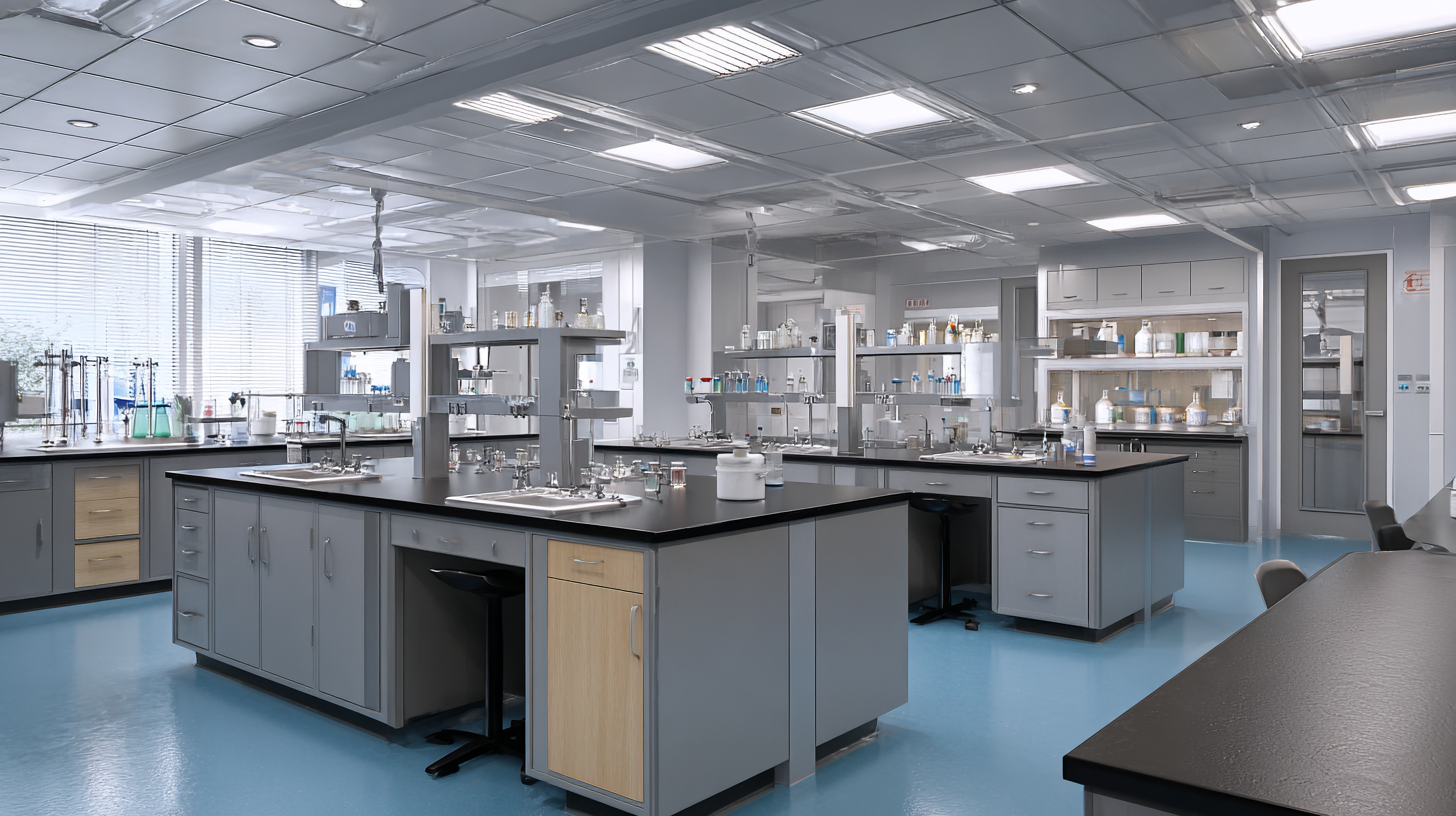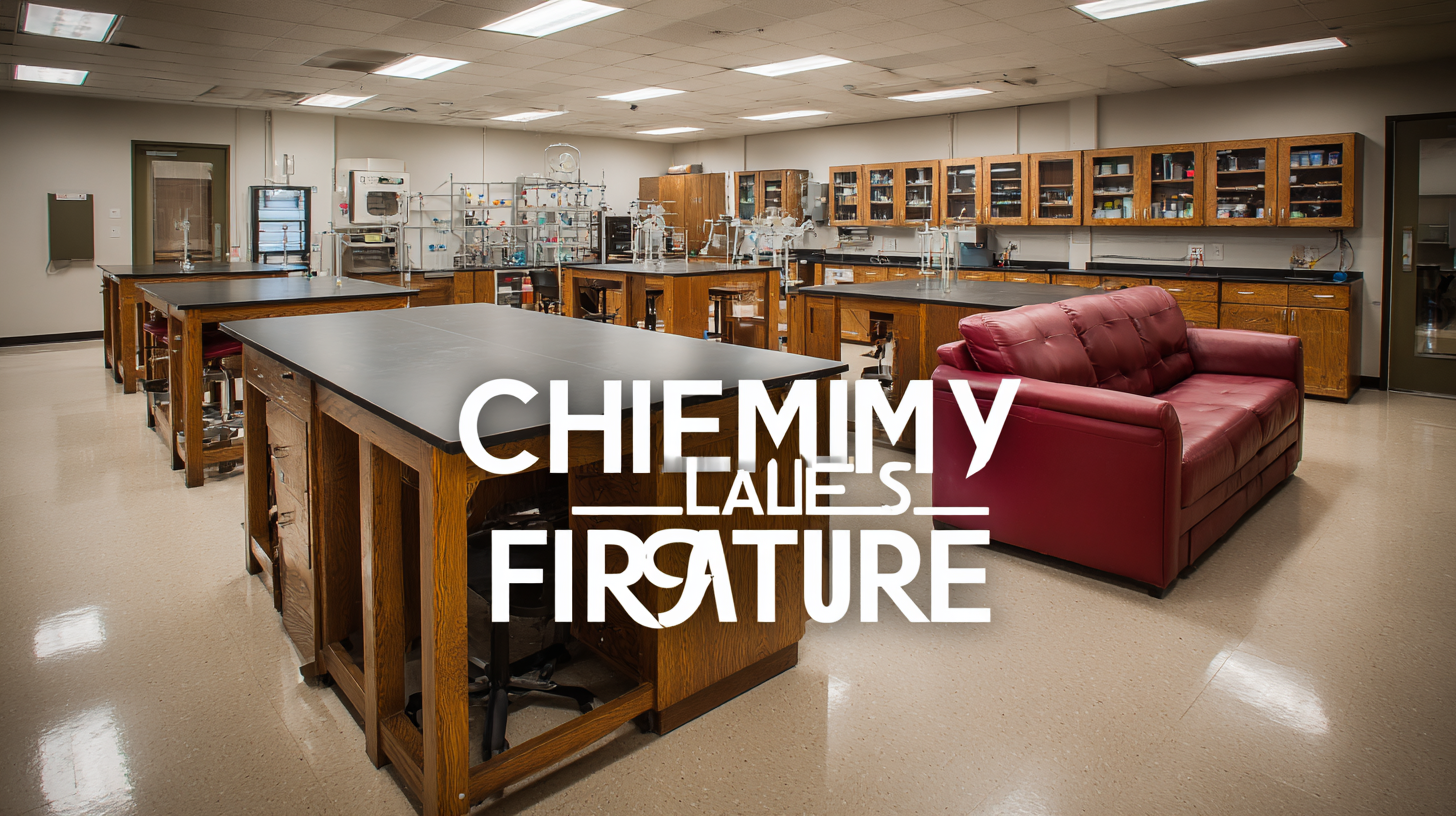In the ever-evolving landscape of scientific research, the significance of high-quality Chemistry Lab Furniture cannot be overstated. With the global lab furniture market expected to reach $6 billion by 2025, according to a recent market analysis, the demand for durable and functional lab furnishings is on the rise. As laboratories strive to enhance productivity and ensure safety, selecting the right supplier becomes paramount. Poorly designed furniture can lead to inefficiencies, increased maintenance costs, and even safety hazards.

Therefore, organizations must carefully evaluate their options and consider factors such as ergonomic design, material durability, and supplier reliability. By doing so, they can effectively tailor their laboratory environments to meet the specific needs of their research pursuits, ultimately driving innovation and success in the field of chemistry.
When it comes to outfitting chemistry labs, identifying your specific lab furniture needs is crucial for enhancing productivity while ensuring safety. A recent report from the American Chemical Society indicates that a well-planned lab environment can increase workflow efficiency by up to 25%. This highlights the importance of selecting lab furniture that supports the unique processes and equipment used in chemistry labs. Consider factors such as space requirements, durability, and adjustable options that accommodate various tasks and personnel ergonomics.

Additionally, safety features cannot be overlooked. The National Institute for Occupational Safety and Health (NIOSH) emphasizes that laboratory furniture should comply with safety regulations to minimize risks associated with chemical spills and accidents. This includes features like chemical-resistant surfaces, secure storage for hazardous materials, and ergonomic designs that reduce strain during operation. By thoroughly assessing these aspects, chemistry labs can create an environment that fosters effective research while prioritizing the health and safety of its users.
When sourcing chemistry lab furniture, it's crucial to find a supplier that embodies certain essential qualities. Firstly, the supplier should have a proven track record and rich industry experience. This ensures that they understand the unique requirements of laboratory environments and can provide furniture designed to meet safety and functional standards. Look for testimonials and case studies that demonstrate their reliability and commitment to quality.
Another vital quality is customization capability. Every laboratory has unique needs based on its specific functions and space constraints. A good supplier should offer customizable solutions that consider factors such as size, design, and material preferences. This ensures that the furniture will not only fit the lab perfectly but also support the work being conducted efficiently.
Lastly, it's important to consider the supplier's level of customer service. Responsive communication and support can make a significant difference in the sourcing process. A supplier who prioritizes customer satisfaction can provide ongoing assistance, whether it’s through installation guidance or addressing any post-purchase issues. Investing time in finding a reputable supplier with these qualities will lead to a more productive and safe lab environment.
When sourcing chemistry lab furniture, it's essential to carefully evaluate potential suppliers to ensure you invest in high-quality, functional, and safe equipment. A comprehensive checklist can help streamline this process. Begin by assessing the supplier's reputation within the industry; look for testimonials and case studies demonstrating their experience and expertise in providing laboratory furniture.
Next, consider the range of products offered. A good supplier should provide a variety of furniture options designed specifically for chemistry labs, including workbenches, storage solutions, and fume hoods. Don't hesitate to ask about their materials and manufacturing processes to ensure that the furniture meets safety and environmental standards.
Tips for evaluation include visiting the supplier’s showcase or production facility if possible, as this provides insights into their capabilities and quality control processes. Additionally, inquire about their after-sales support and warranty policies, as these aspects are crucial for long-term satisfaction. Always request quotes from multiple suppliers to compare prices and services effectively. Keeping these factors in mind can significantly enhance your lab's functionality and safety.
When it comes to procuring chemistry lab furniture, ensuring value for money is paramount. Comparing costs across different suppliers can help you make an informed decision, but it's equally important to consider the quality and durability of the products. Cheaper options may seem attractive, but they can lead to higher costs in the long run due to replacement needs and lower ergonomic standards.
**Tips for Cost Comparison:**
1. **Set a Budget:** Before you begin shopping, establish a clear budget that outlines your financial limits. This helps streamline your choices and keeps you focused on options that provide the best value.
2. **Evaluate Total Cost of Ownership:** Look beyond initial purchase prices. Consider factors such as maintenance costs, expected lifespan, and warranty services. Investing slightly more for a higher quality product can save money in repairs and replacements over time.
3. **Request Samples:** Before making a final decision, request samples or visit showrooms to evaluate the quality of the furniture firsthand. This ensures that you are investing in pieces that meet safety standards and enhance functionality in your lab environment.
| Supplier Type | Furniture Type | Cost ($) | Warranty (Years) | Material | Customer Rating |
|---|---|---|---|---|---|
| Local Manufacturer | Lab Benches | 800 | 5 | Steel | 4.7 |
| Online Retailer | Sinks and Faucets | 150 | 3 | Ceramic | 4.5 |
| International Vendor | Storage Cabinets | 600 | 4 | Metal | 4.2 |
| Local Distributor | Fume Hoods | 1200 | 6 | Polypropylene | 4.8 |
| Wholesale Supplier | Workstations | 950 | 5 | Laminate | 4.6 |
Building long-term relationships with suppliers is crucial in the chemistry lab furniture industry, especially as organizations increasingly prioritize quality and sustainability. According to a report by IBISWorld, the laboratory furniture manufacturing industry was valued at approximately $1.5 billion in 2022, with growth driven by advancements in science and technology. Establishing solid collaboration with suppliers can lead to better pricing, exclusive access to innovative products, and enhanced service levels, which are vital in maintaining a competitive edge.

To foster effective collaboration, regular communication is essential. Engaging in open dialogues about expectations, timelines, and potential challenges can significantly improve supplier relations. A survey by Capterra indicates that 70% of successful partnerships are built on clear communication and mutual understanding. Furthermore, investing time in understanding your supplier’s capabilities, processes, and values can lead to more strategic sourcing decisions. By aligning your business goals with those of your supplier, both parties can work towards shared objectives, ultimately leading to a more efficient supply chain and better outcomes for your laboratory environment.
